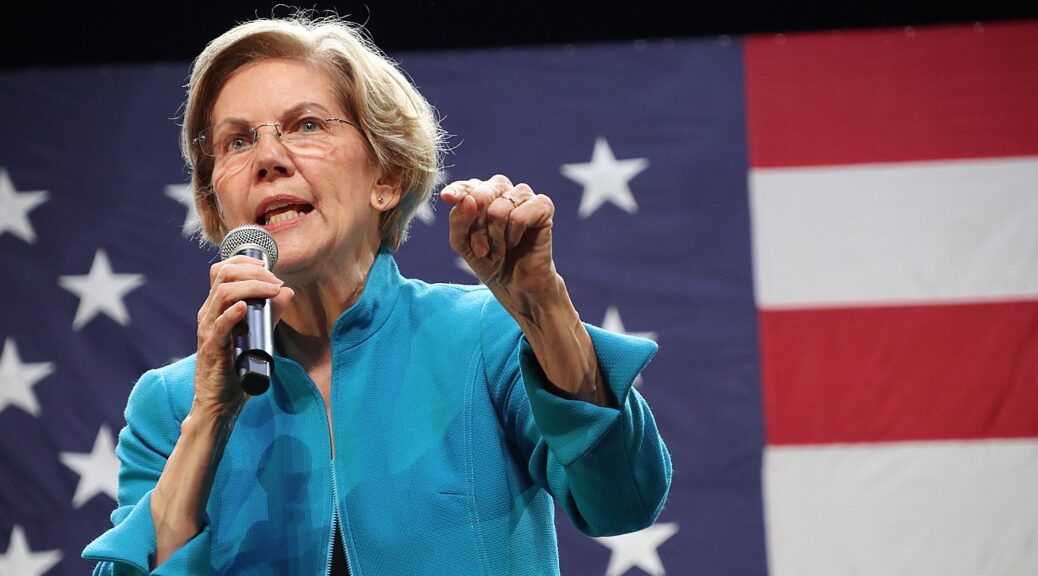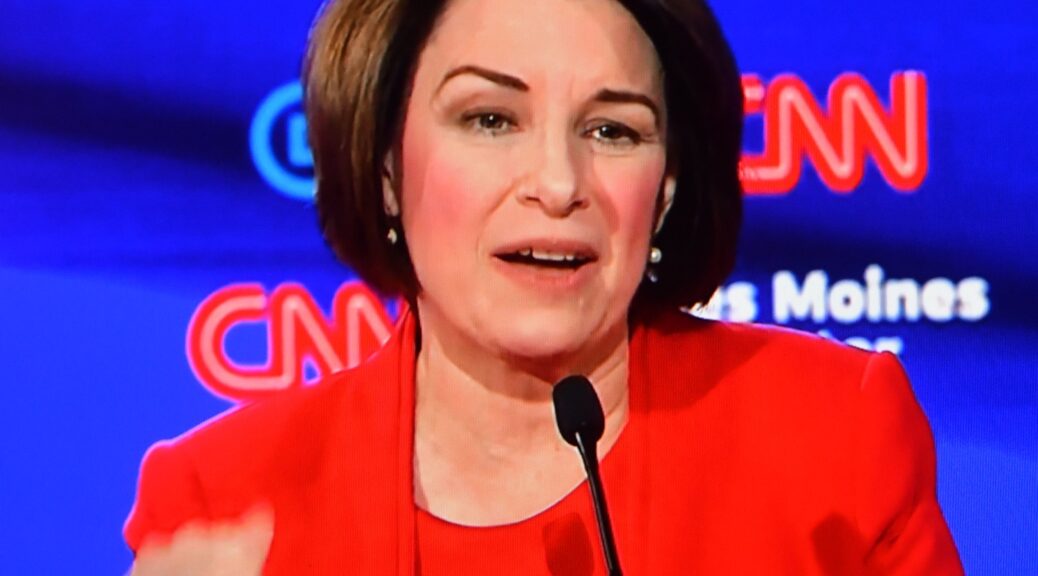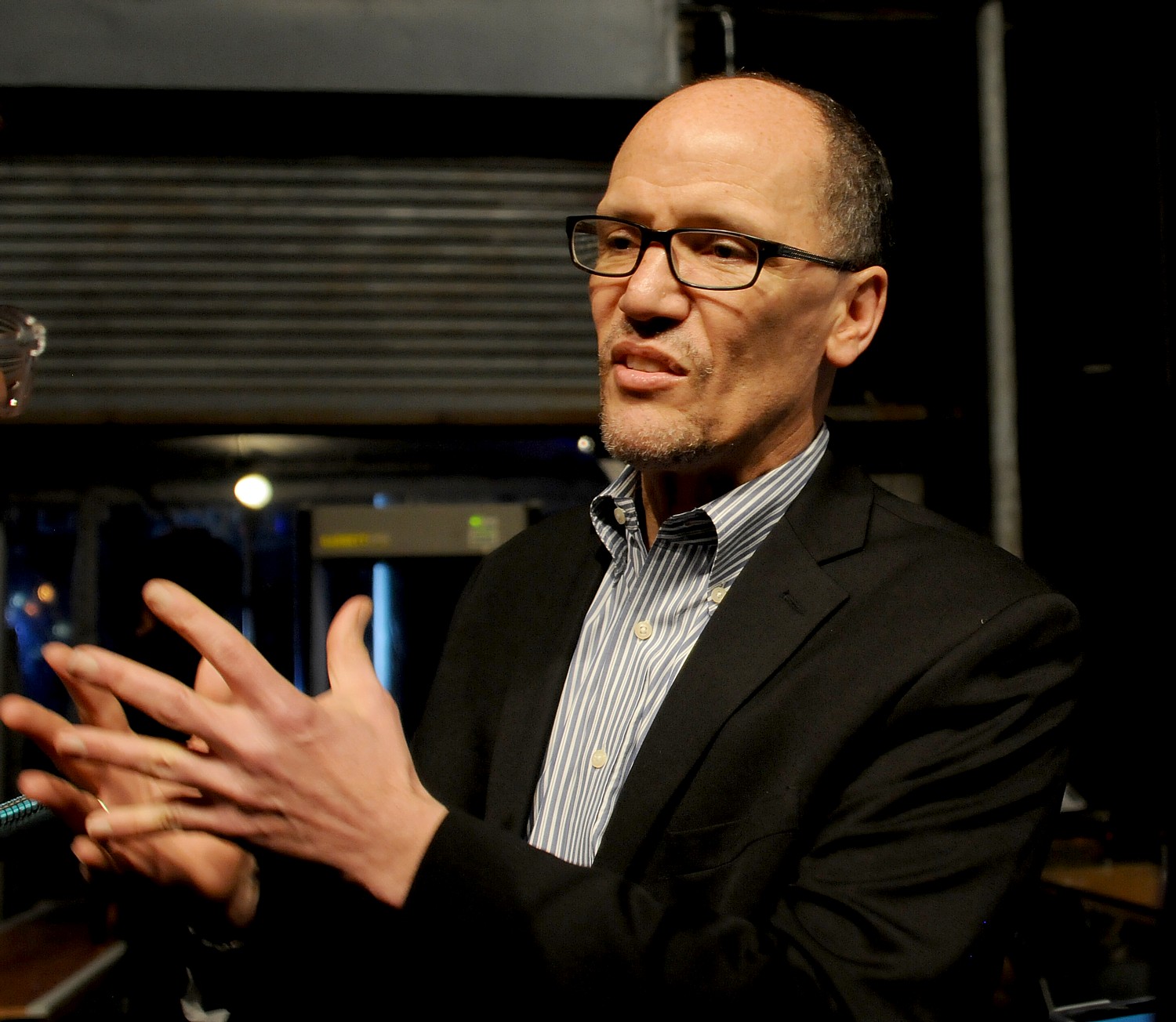
In contrast with the disjointed, chaotic, ineffective, politicized handling to stem the coronavirus pandemic offered by the Trump Administration still more concerned about the stock market than lives (Trump suggested a new benchmark, that since as many as 65,000 people die each year from seasonal flu – “Who knew? I find that amazing” – that anything less would be considered victory), every Democratic candidate to replace Trump has demonstrated more effective leadership. Trump has honed in on pushing the Federal Reserve to lower interest rates, and for further tax cuts which will do nothing to address the actual global economic impacts of a pandemic – curtailed production and consumer demand as well as general business uncertainty – Senator Elizabeth Warren released her plan to take decisive action to both keep American families healthy and stabilize the economy. This is from the Warren campaign:
Charlestown, MA – Today, Elizabeth Warren
released her plan to take decisive action to keep American families healthy and
stabilize our economy as the virus spreads.
Elizabeth Warren’s plan will:
Ensure that every American — including the millions of Americans who are uninsured — can get all recommended evaluation and care for coronavirus for free, including any recommended coronavirus vaccine once it is developed.
Create an emergency paid leave program so that anyone who meets the CDC’s description of relevant symptoms of coronavirus or is exposed and placed under quarantine can get fully paid time off of work to consult a doctor and recover—or provide care to a family member or other dependent who requires it.
Enact at least a $400 billion fiscal stimulus package to head off the potential economic impact of coronavirus.
Elizabeth discussed these
concrete solutions to the coming economic shocks of coronavirus at a town hall
in Houston over the weekend. The plan released today builds on her
comprehensive plan to prevent, contain, and treat infectious diseases outbreaks
like coronavirus she released more than four weeks
ago — before any of the other candidates, or the incumbent in
the White House.
Read her plan here and below.
Protecting our People and our Economy from Coronavirus
Coronavirus is a public health emergency and a serious threat to the American
economy. While it’s important that our leaders communicate calmly and clearly
about the situation to avoid unnecessary panic, it’s just as important that we
take decisive action to keep American families healthy and stabilize our
economy as the virus spreads.
Coronavirus is already hitting other countries hard. Major cities in China have been
effectively shut down for weeks. Japan just announced that it was
closing schools for about a month. The number of confirmed coronavirus
cases in Italy, Iran, and South Korea continues to grow.
And now coronavirus is here. This weekend, the U.S. experienced its first death from
the virus and there are at least two coronavirus
cases of apparent local origin in California, two in Washington,
and one in Oregon. Firms
like Amazon have suspended non-essential
employee travel in the United States and US film and TV productions have
cancelled or suspended shoots.
Weeks ago, I was the first presidential
candidate to put out a plan to address the public health effects of coronavirus.
And with Republicans insisting that we cut spending elsewhere to cover the cost
of coronavirus response, I introduced a bill in the Senate to
immediately move the billions of dollars taxpayers are spending on Donald
Trump’s useless border wall to coronavirus preparedness instead.
But it’s clear that we must do even more to contain the spread of the virus and
to address the economic damage it is creating. The Dow Jones dropped nearly 12%
last week — its worst week since the 2008 financial crisis —
but the plummeting stock market is just the tip of the iceberg. Small
businesses that rely on overseas production are suffering.
American exporters in agriculture and forestry are losing access to valuable overseas
markets. Tourism is down sharply.
Supply chain disruptions due to halted production in China
and elsewhere will ripple through the economy for months,
especially in critical industries like automobiles and electronics. And
coronavirus has exposed a critical weakness in our drug supply chain. Active
pharmaceutical ingredients are the chemical components of drugs that make them
work—and a significant portion of them are
manufactured in China, which means supply chain
disruption may eventually cause drug shortages in the U.S.
Analysts now project that American companies will generate
zero earnings growth in 2020 because of coronavirus. And if the
coronavirus reaches global pandemic levels, experts predict that it could lead
to a recession in the US and across the globe.
The Trump Administration response has been a mess. The
President has put Vice President Mike Pence in charge of coordinating the
response — the same man who ignored scientific experts and
presided over a public health emergency as Governor of Indiana.
Instead of buckling down and working on our response after being put in charge,
Pence promptly spoke at a right-wing conference and jetted off to Florida for a
Republican fundraiser. Meanwhile, the Trump Administration appears
to have no ideas for dealing with the widespread economic effects of
coronavirus except more tax cuts.
I rang the warning bells for years
before the 2008 crisis. Quicker action during the Bush
Administration could have reduced the severity of the crisis — or averted it
entirely. While we still don’t know the full scope of the public health and
economic impact of coronavirus, and even further actions may be necessary in
upcoming months, we should take the following steps right now to limit the
spread of the virus and get ahead of its economic impact:
Ensure that every American — including the millions of Americans who are uninsured — can get all recommended evaluation and care for coronavirus for free, including any recommended coronavirus vaccine once it is developed.
Create an emergency paid leave program so that anyone presenting with the symptoms of coronavirus, or who has a family member or other dependent presenting with the symptoms of coronavirus, can get fully paid time off of work to see a doctor, get treatment, or provide care.
Enact at least a $400 billion fiscal stimulus package to head off the potential economic impact of coronavirus.
Ensuring Every American Can Get Free Care for Coronavirus
The request for emergency supplemental funding put forward by Senate Democrats is a good proposal. I strongly support it. But I believe we must also do more.
Paying for Care. Donald Trump has spent years ripping health coverage away from millions. As deductibles soar, many Americans must pay full price for care until months into a new plan year, as they wait for their insurance to kick in. People without coverage often do not seek the care they need and those with high deductibles delay important care. And for those who are put under federally mandated quarantines, thousands of dollars in medical bills may plunge them into a serious financial crisis. Millions of Americans choosing not to seek care because of cost concerns will worsen the public health and economic effects of coronavirus.
Medicare for All will prevent this kind of problem in the future. But in the short term, facing a potential outbreak, we must ensure that every person in this country can talk to a doctor if they think they might have coronavirus—and get the recommended testing and care they need if they do.
If other countries’ experiences are an indication, most people who contract the virus will need simple, supportive primary care and to stay isolated to prevent further spread. But it’s important that those who become acutely ill can seek the more advanced care they need.
Our response must ensure that every person in this country can get recommended evaluation, diagnosis, and treatment for coronavirus for free. Congress should dedicate sufficient funding to reimburse health care providers and hospitals for uncompensated care relating to coronavirus. This fund should also be large enough to cover the costs of government mandated quarantines or isolation for patients who cannot afford any bills that it may generate. Congress should also require that insurers fully cover all recommended care for coronavirus, including appropriate evaluation, diagnostic testing, and treatment.
What does my plan mean for you? It means that you could get all recommended medical advice and care for coronavirus for free—regardless of whether you have hit your deductible, whether you’re on Medicare or Medicaid, or have no insurance at all.
Ensuring Hospital and Health System Capacity. Because of the way coronavirus spreads, many more people will be exposed to it than we saw with Zika or Ebola. That means our health system will see a surge in demand for basic primary care and diagnostic screenings in the midst of an already brutal flu season that has stretched hospitals’ capacity. To address the likely increase in people seeking medical evaluation and treatment for coronavirus, Congress should provide a temporary surge in funding for Federally Qualified Health Centers, Community Health Centers, Rural Health Clinics, and safety-net hospitals to increase their capacity.
Ensuring Access to Vaccines and Other Medical Countermeasures. We must increase federal investment in developing a coronavirus vaccine and ensure that every person who needs the vaccine can get it at no personal cost. As we did during the outbreak of H1N1 (the “swine flu”), the government should guarantee that it will purchase a bulk quantity of the eventual vaccine for coronavirus. This will create an incentive for the private sector to develop it quickly and ensure manufacturers of sufficient demand.
We must also ensure — either under existing laws or through new congressional action — that health insurance companies and federal health programs cover any recommended coronavirus vaccine with no cost sharing, similar to the H1N1 vaccines from 2009. The government can also distribute the vaccines to vulnerable populations and provide them for free to the uninsured. In the event that a private sector manufacturer wants to charge an outrageous price for the vaccine once it is developed, the government should contract for its manufacture or invoke compulsory licensing as I have called for in other drug pricing contexts, and as the government threatened to do during the 2001 anthrax scare.
Together, these actions will ensure that every American can get the vital medical advice and care they need for coronavirus for free. That is not only the moral thing to do, it limits the spread of the disease and keeps us all safer.
Guaranteeing Every American Fully Paid Emergency Leave for Coronavirus Testing and Recovery
America’s shameful lack of national paid leave and sick days will worsen the spread of coronavirus. People who feel sick will go into work anyway, afraid of losing their jobs or the pay they badly need. Parents may feel compelled to work even as their kids or their elderly relatives might need medical attention. Research shows that mandated paid leave and sick days dramatically reduce the spread of diseases.
Congress must act to pass Senator Gillibrand’s FAMILY Act, which would provide up to twelve weeks per year of paid leave to all workers to care for themselves and their loved ones in case of serious medical issues or the welcoming of a new child. As President, I will fight to make this policy the law. But in the face of a public health crisis, we can’t wait — and should immediately make cash assistance available to people who need time off because of coronavirus through an “emergency paid leave” program.
Here’s how it would work:
Anyone who meets the CDC’s description of relevant symptoms or is exposed and placed under quarantine — or has a family member or other dependent who meets that description — will be eligible for emergency paid leave to take time off to follow CDC’s recommended course of action, which may include self-isolation, evaluation and testing, or treatment.
Emergency paid leave will be available pursuant to CDC’s guidelines about the appropriate length of recovery and quarantine or isolation time for those who contract or are exposed to coronavirus. If a family caretaker is also required during this period, that person will also be eligible for emergency paid leave.
Anyone eligible for the program will receive emergency paid leave that fully replaces their actual wage income — up to a cap set at the 99th wage percentile.
My emergency paid leave program will accomplish two critical
goals. First, it will give people the financial peace of mind to take time off
to stay home and recover or care for a loved one who has the symptoms of
coronavirus or has been exposed to it. That will help limit the spread of the
disease. Second, providing access to paid leave benefits funded by the
government rather than by employers during this health crisis will help
stabilize businesses, who will be relieved of the burden of potentially paying
large shares of their workforce for long absences.
Enacting At Least a $400 Billion Stimulus to Head Off the Projected Economic
Effects of Coronavirus, and Announcing a Federal Reserve Emergency Lending
Program
Experts have a variety of estimates of the potential impact of coronavirus on
the American economy. They project that coronavirus will reduce US economic
growth in 2020 by at least 0.2 percentage points. But they recognize that if coronavirus turns
into a global pandemic — which they give a 40% likelihood — it could produce
a US and global recession. An older Congressional Budget Office
analysis of the potential US economic impact of various
pandemic scenarios estimated that a pandemic could reduce US economic growth by
between 1% and 4.25% of GDP.
There is evidently much uncertainty at this time about the potential economic
impact of coronavirus, but several factors weigh in favor of enacting a
stimulus to counteract a more severe impact. First, the US does not have particularly
strong automatic economic stabilizers compared to other industrialized
countries. Second, given the extremely low cost of government
borrowing now, the US has the capacity to borrow and invest at a
higher return. Third, history shows that it’s often hard to pass multiple
stimulus packages in succession — and it’s better that the initial package is
too big rather than too small.
Based on those factors and the range of projections for the economic impact
of coronavirus, we should immediately enact a stimulus package that represents
an authorization of at least 2% of GDP, or roughly $400 billion.
The stimulus should focus on the following categories of spending:
Low or no-interest loans to companies of all sizes that are negatively affected by supply chain disruptions, reductions in tourism, or other temporary coronavirus-related impacts, and that will use the funds to avoid layoffs and hours reductions, not for additional executive compensation, dividends, or share buybacks.
Unemployment insurance and other direct payments to households — with exact amounts tied to unemployment levels and wage growth.
Other aid to state and local governments that may be losing revenue because of coronavirus, in order to minimize reductions in services for residents.
Jump starting our ability to make our own active pharmaceutical ingredients and their base components by establishing a strategy to support domestic manufacturers—with the ultimate goal of requiring all federal agencies that procure or reimburse for drugs (like the DOD, VA, and Medicare) to preference drugs with American-made ingredients. My legislation to allow the government to manufacture drugs would provide a strong foundation for this effort.
Green infrastructure investments, like domestically produced clean energy, that can be accomplished even with the supply chain disruptions that are likely to exist with a widespread coronavirus outbreak.
Given the positive multiplier effect that these types of government spending have on the economy, a stimulus of this type would likely counteract a roughly 3% dip in GDP.
In addition, whether the Federal Reserve Board chooses to cut interest rates or not, it should announce as soon as possible — and no later than the markets opening on Monday — that it stands ready to use its emergency lending authority to create a broad-based emergency lending facility program to help real economy companies whose supply chains have been disrupted because of the coronavirus and who will use the money to do right by their workforce.
Companies across America are already struggling with supply chain disruptions, and we don’t want these temporary struggles to lead to widespread layoffs or for otherwise solid companies to go under. While Congress should deliver the stimulus package I described above to help these types of companies, an immediate announcement from the Fed of this type of program will give companies — and markets — confidence that the Fed is available as a lender of last resort if Congress fails to deliver, and could help avert a more severe downturn.
Read her plan here







